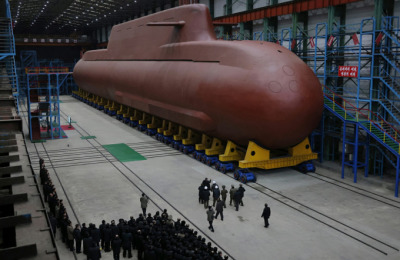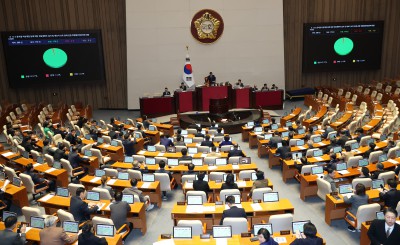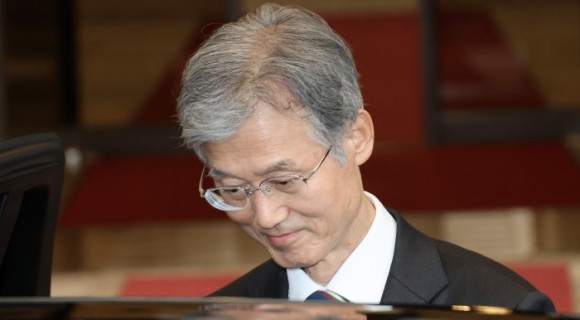At the Fourth Economic Summit, Stanford Institute for Economic Policy Research, Stanford, California
March 2, 2007
Globalization and Monetary Policy
 My topic this evening is the implications of ongoing global economic integration “globalization” for short--for U.S. monetary policy. At the broadest level, globalization influences the conduct of monetary policy through its powerful effects on the economic and financial environment in which monetary policy must operate. As you know, several decades of global economic integration have left a large imprint on the structure of the U.S. economy, including changes in patterns of production, employment, trade, and financial flows. Other than by contributing to general economic and financial stability, monetary policy can do little to affect these structural changes or the powerful economic forces that drive them. However, to make effective policy, the Federal Reserve must have as full an understanding as possible of the factors determining economic growth, employment, and inflation in the U.S. economy, whether those influences originate at home or abroad. Consequently, one direct effect of globalization on Federal Reserve operations has been to increase the time and attention that policymakers and staff must devote to following and understanding developments in other economies, in the world trading system, and in world capital markets.
My topic this evening is the implications of ongoing global economic integration “globalization” for short--for U.S. monetary policy. At the broadest level, globalization influences the conduct of monetary policy through its powerful effects on the economic and financial environment in which monetary policy must operate. As you know, several decades of global economic integration have left a large imprint on the structure of the U.S. economy, including changes in patterns of production, employment, trade, and financial flows. Other than by contributing to general economic and financial stability, monetary policy can do little to affect these structural changes or the powerful economic forces that drive them. However, to make effective policy, the Federal Reserve must have as full an understanding as possible of the factors determining economic growth, employment, and inflation in the U.S. economy, whether those influences originate at home or abroad. Consequently, one direct effect of globalization on Federal Reserve operations has been to increase the time and attention that policymakers and staff must devote to following and understanding developments in other economies, in the world trading system, and in world capital markets.A narrower question, but one that is critical for monetary policy makers, is whether the increased openness of the U.S. economy has in some way affected the ability of the Federal Reserve to meet its congressional mandate to foster price stability and maximum sustainable employment. On this issue, some analysts have argued that globalization hinders monetary policy--for example, by reducing the ability of the Federal Reserve to affect U.S. interest rates and asset prices or by diminishing the role of domestic factors in the inflation process.
You will not be surprised to hear that the Federal Reserve System is quite interested in the implications of globalization for the conduct and effectiveness of monetary policy. Members of the Board staff have conducted extensive research on the topic, and the Federal Reserve Bank of San Francisco--which is deeply engaged in Asia-Pacific issues--has been a leader in this area as well. The Federal Reserve Bank of Dallas has created a Globalization and Monetary Policy Institute, which will support the study of globalization’s effects on policy and the economy, and a number of other Reserve Banks have undertaken similar efforts.
In the remainder of my talk I will discuss two channels through which globalization may have affected the transmission and effectiveness of U.S. monetary policy. First, I will consider whether the globalization of finance has weakened or otherwise affected the ability of U.S. monetary policy to influence domestic financial market conditions. Second, I will discuss what we know about the way international factors influence the determination of inflation, a key goal variable for monetary policy.
Globalization, Monetary Policy, and Financial Markets
Monetary policy works in the first instance by affecting financial conditions, including the levels of interest rates and asset prices. Changes in financial conditions in turn influence a variety of decisions by households and firms, including choices about how much to consume, to produce, and to invest. Anyone who participates in financial markets these days is aware that these markets transcend national borders and are highly sensitive to economic and political developments anywhere in the world. Does financial globalization significantly reduce the influence of the Federal Reserve on financial conditions in the United States and thereby possibly make U.S. monetary policy less effective?
Certainly, the financial environment in which U.S. monetary policy is made has been irrevocably changed by the remarkable increases in the magnitudes of financial flows into and out of the United States. A quarter-century ago, foreign holdings of U.S. financial assets were limited, and therefore, the influence of foreign investors and foreign financial conditions on U.S. financial markets was in most cases relatively modest. As I have already noted, that situation has changed markedly, as global financial markets have become increasingly integrated and both foreign and domestic investors have become more diversified internationally. Today, foreigners hold about one-quarter of the long-term fixed-income securities issued by U.S. entities of all types and more than half of publicly-held U.S. Treasury securities. Cross-border financial flows are enormous and growing: For example, in 2006, foreigners acquired on net more than $1.6 trillion in U.S. assets, while U.S. investors purchased more than $1 trillion in foreign assets. Given their scale, capital inflows and outflows certainly influence long-term U.S. interest rates and other key asset prices, both by affecting the underlying supply-demand balance between saving and capital investment and by helping to determine the premiums that investors receive for holding assets that are risky or illiquid.
How does all this affect monetary policy? It is helpful to think about the potential implications of globalized financial markets for monetary policy by beginning with the first stages of the monetary policy transmission mechanism. In particular, as you know, the Federal Reserve influences financial conditions through its ability to control the federal funds rate, the interest rate at which banks lend to each other overnight. Through the use of open-market operations and other techniques, the Federal Reserve can manage the supply of funds in the interbank market as needed to keep the federal funds rate close to its target, a capability that has not been affected by the increased international integration of financial markets. Although the federal funds rate does not itself have a major influence on economic activity, other short-term rates--such as Eurodollar rates--are determined largely by the current and expected future values of the funds rate, reflecting the close substitutability of alternative short-term sources of funding. The Federal Reserve’s ability to control the federal funds rate thus gives it a strong influence over other short-term dollar nominal interest rates and, to the extent that inflation is inertial or sticky in the short run, over short-term real interest rates as well.
The Fed’s ability to set the short-term interest rate independently of foreign financial conditions depends critically, of course, on the fact that the dollar is a freely floating currency whose value is continuously determined in open, competitive markets. If the dollar’s value were fixed in terms of another currency or basket of currencies, the Fed would be constrained to set its policy rate at a level consistent with rates in global capital markets. Because the dollar is free to adjust, U.S. interest rates can differ from rates abroad, and, consequently, the Fed retains the autonomy to set its federal funds rate target as needed to respond to domestic economic conditions.
Short-term interest rates affect the domestic economy through a number of channels (for example, by affecting the cost of holding inventories), so monetary policy could influence economic activity to some degree even if its control were limited to the short end of the yield curve. Moreover, the pricing of some putatively long-term financial assets may be strongly influenced by shorter-term rates. Thirty-year fixed-rate mortgages provide one example. Because people move or refinance their loans, leading them to prepay their mortgages, and because the pattern of real mortgage payments is more front-loaded than that of nominal payments, the effective duration of a thirty-year mortgage may be closer to five years than to thirty years.
Nevertheless, the ability to influence longer-term interest rates and the prices of longer-term assets is an important component of the Fed’s toolkit for managing aggregate demand. What are the implications of increased global financial integration further along the transmission mechanism? The globalization of financial markets does at times make the Fed’s analysis of financial and economic conditions more complex. The behavior of long-term interest rates over the past few years is a case in point. Compared with historical averages, long-term nominal interest rates have remained relatively low in recent years--the phenomenon that the previous Chairman, Alan Greenspan, termed a “conundrum”--even as the Federal Reserve was withdrawing monetary accommodation by raising the target for the federal funds rate by more than 400 basis points. As a consequence, the Treasury yield curve has become inverted--that is, long-term rates have been lower than short-term rates, another historically unusual pattern. Developments in global capital markets have contributed significantly to these outcomes. For example, strong foreign demand for U.S. long-term debt has been one factor tending to reduce the term premium, the extra return that investors demand to hold longer-term bonds. All else equal, a smaller term premium implies a lower level of long-term interest rates. At the same time, increases in the net supply of saving in global capital markets--which, to a significant extent, are a product of the large current account surpluses of some emerging-market economies and of oil-producing nations--have resulted in lower real long-term interest rates both in the United States and abroad. Clearly, to understand and evaluate the behavior of the term structure and to assess the implications of current yields for the domestic economy, the Fed must take into account the various effects of foreign capital flows on U.S. yields and asset prices, a task that can be quite challenging.
With globalized financial markets comes increased financial interdependence. One statistical indicator of that interdependence is that the correlations between long-term interest rates in the United States and those in other industrial countries are high and appear to have risen significantly in the last few years. For example, from 1990 to 2006, the daily correlation between changes in ten-year swap rates in the United States and Germany averaged 0.42, a relatively high value. During the last three years of that period, however, that correlation rose to 0.65, an increase that is both economically and statistically significant. Similar results obtain for the correlation of U.S. yields with yields of other industrial countries, including Canada, the United Kingdom, and Japan. That interdependence suggests that monetary policy makers must pay attention to conditions abroad as well as at home.
However, the greater analytical complexity and interdependence associated with the globalization of financial markets notwithstanding, both theory and--perhaps more persuasively--recent experience support the view that the Federal Reserve retains considerable leverage over longer-term rates and key asset prices, although the links from monetary policy decisions to longer-term rates are somewhat looser than those to short-term rates. In particular, by employing consistent and predictable policies, the Fed can help to shape market participants’ views of how future nominal short-term rates are likely to evolve and how they are likely to respond to economic developments. Because long-term nominal interest rates can be viewed as the sum of a weighted average of expected future short-term nominal interest rates plus a term premium, Federal Reserve policies and communications substantially influence the behavior of these rates. In analogous fashion, the Fed’s ability to influence real interest rates at shorter horizons provides a lever for affecting longer-term real yields. Like nominal long-term yields, real long-term yields can be viewed as an average of current and future expected short-term real rates, so that the effects of monetary policy on shorter-term real yields feed into longer-term yields as well. Well-anchored inflation expectations are also helpful in this regard: If expectations of long-term inflation are stable, then changes in long-term nominal interest rates translate into similar changes in long-term real rates.
The empirical literature supports the view that U.S. monetary policy retains its ability to influence longer-term rates and other asset prices. Indeed, research on U.S. bond yields across the whole spectrum of maturities finds that all yields respond significantly to unanticipated changes in the Fed’s short-term interest-rate target and that the size and pattern of these responses has not changed much over time (Kuttner, 2001; Andersen and others, 2005; and Faust and others, 2006). Empirical studies also find that U.S. monetary policy actions retain a powerful effect on domestic stock prices.1
If globalization has not constrained the ability of U.S. monetary policy to influence domestic financial conditions, why are long-term interest rates and key asset prices so correlated across economies? One possibility is that economic integration has increased the extent that economic shocks--to the oil market, for example--have global rather than purely local effects and that most of the world’s central banks are guiding their policy response in similar ways to such shocks. Recent research suggests another possibility, which is that U.S. monetary policy actions may have significant effects on foreign yields and asset prices as well as on domestic financial prices. For example, changes in U.S. short-term interest rates seem to exert a substantial influence on euro area bond yields (Ehrmann, Fratzscher, and Rigobon, 2005; Faust and others, 2006) and appear to have a strong effect on foreign equity indexes as well.2 In contrast, the effects of foreign short-term rates on U.S. asset prices appear to be relatively weaker. These cross-border effects of policy, and their asymmetric nature, are somewhat puzzling. One would expect a more symmetric relationship between the United States and the euro area, for example, as the two regions are of comparable economic size. It will be interesting to see if these relationships persist.
I draw two conclusions on this issue. First, the globalization of financial markets has not materially reduced the ability of the Federal Reserve to influence financial conditions in the United States. But, second, globalization has added a dimension of complexity to the analysis of financial conditions and their determinants, which monetary policy makers must take into account.
Has Globalization Affected the U.S. Inflation Process?
Other than through its influence on financial markets, globalization may also have affected the operation of monetary policy by changing the relative importance of the various factors that determine the domestic inflation rate.3 As national markets become increasingly integrated and open, sellers of goods, services, and labor may face more competition and have less market power than in the past. In particular, prices and wages may depend on economic conditions abroad as well as on conditions in the local market. These linkages suggest that, at least in the short run, globalization and trade may affect the course of domestic inflation.
International factors might affect domestic inflation through several related channels. First, the expansion of trade may cause domestic inflation to depend to a greater extent on the prices of imported goods--not only because imported goods enter the consumer basket or (in the case of imported intermediate goods) affect the costs of domestic production, but because competition with imports affects the pricing power of domestic producers. Second, competitive pressures engendered by globalization could affect the inflation process by increasing productivity growth, thereby reducing costs, or by reducing markups. Third, to the extent that some prices are set in internationally integrated markets, pressures on resource utilization in foreign economies could be relevant to domestic inflation.4
Some analysts might object to the proposition that globalization affects the inflation process at all on the grounds that the structural changes that globalization engenders can affect only the relative prices of goods and services; in contrast, inflation--the rate of change of the overall price level--must ultimately be determined solely by monetary policy (Ball, 2006). Certainly, monetary policy determines inflation in the long run, and the central bank must take responsibility for the inflation outcomes generated by its policies. For example, the opening of trade with emerging-market economies that have low labor costs may reduce the relative prices of imported manufactures, but if the long-run inflation objective of the central bank is held constant, then the ultimate effect of the lower import prices on inflation will be nil as changes in other prices offset the effect of import prices.
However, the conclusion that inflation is determined only by monetary policy choices need not hold in the short-to-medium run. In the shorter term, central banks do not usually offset completely the effects of shocks to supply or prices--of which a change in the relative price of imports is an example--in part because any monetary action made in response will take time to be effective. Consequently, such shocks may affect domestic inflation for a time. More subtly, a central bank following a strategy of “opportunistic disinflation” might react to a favorable shock to supply or prices by lowering its medium-term objective for inflation (Orphanides and Wilcox, 2002). In the case of a central bank pursuing such a strategy, foreign factors that depress domestic inflation may have a persistent effect so long as inflation exceeds the central bank’s long-term objective.5
What, then, is the evidence for the view that globalization is affecting the inflation process in the United States? Of the various channels that have been suggested, probably the most intuitive is the idea that greater openness to trade has increased the influence of import prices on domestic inflation. In the major industrial economies over the past decade or so, import prices--particularly the prices of imported manufactured goods--have generally risen at a slower rate than other consumer prices, slowing overall inflation. The slower growth in import prices reflects to some extent rapid productivity gains in the production of manufactures, an important component of trade.6 Increased exports by low-cost emerging-market economies have also helped keep down the prices of imports received by the United States and other industrialized countries. Indeed, the share of U.S. non-oil imports coming from the emerging Asian economies has increased from 27 percent to 34 percent over the past decade or so.
Overall, research indicates that trade with developing economies in particular has slowed the rate of growth of import prices faced by industrialized countries, with estimates of the reduction ranging widely from 1/2 to 2 percentage points. One study, for example, estimated that trade with China alone has reduced annual import price inflation in the United States by about 1 percentage point over the period 1993-2002 (Kamin, Marazzi, and Schindler, 2006)7. However, imported goods make up only part of what people consume, and so the effect on overall inflation is less than the deceleration in the prices of imports alone. Typical estimates of the short-term effect on the overall inflation rate of less-rapid increases in the prices of imports stemming from trade with China are in the neighborhood of 0.1 percent or less per year--a discernable but certainly not a large effect.
This result requires several qualifications. First, the direct effect of lower import prices on overall consumer price inflation could understate the overall effect, if lower import prices force competing domestic firms to restrain their prices as well. Research has generally found that import prices do affect the prices charged by domestic producers.8 For example, the International Monetary Fund found that, in a range of industrial economies, the prices of domestic products were restrained by competition from imports, the effect being larger with greater penetration (IMF, 2006). To the extent that import competition slows the rate of increase of domestic prices, the tendency of lower-cost imports to reduce domestic inflation will be enhanced.
On the other hand, not all aspects of globalization and trade reduce inflation. For example, globalization has been associated with strong growth in some large emerging-market economies, notably China and India, and this growth likely has contributed to recent increases in the prices of energy and other commodities. During 2003-05, for example, China alone accounted for nearly one-third of the growth in both global real gross domestic product (GDP) and oil consumption. It is difficult to assess the exact extent to which increased demand by developing countries has contributed to the run-ups in commodity prices in recent years, as these prices are also affected by supply conditions and other factors. However, one study estimated that, if the share of world trade and world GDP enjoyed by non-industrial countries had remained at its 2000 levels, then by 2005 real oil prices would have been as much as 40 percent lower, and real metals prices 10 percent lower, than they actually were (Pain, Koske, and Sollie, 2006). Accordingly, in the past several years, the effect of growth in developing economies on commodity prices has been a source of upward pressure on inflation in the United States and other industrial economies.
When the offsetting effects of globalization on the prices of manufactured imports and on energy and commodity prices are considered together, there seems to be little basis for concluding that globalization overall has significantly reduced inflation in the United States in recent years; indeed, the opposite may be true. That said, the integration of rapidly industrializing economies into the global trading system clearly has had important effects on the prices of both manufactures and commodities, reinforcing the need to monitor international influences on the inflation process.
Globalization also may affect the inflation process through other channels. Some researchers, for example, have suggested greater openness to trade and the resulting increase in competition may have led to reduced markups of price over cost (Chen, Imbs, and Scott, 2004). However, the rise in profit rates in recent years seems inconsistent with the view that markups have declined (Bowman, 2003; Kohn, 2006).9 The competition fostered by trade should also promote productivity growth, reducing growth in costs and making the attainment of low inflation easier. That productivity growth is linked to the intensity of competition is plausible, and more-rapid productivity growth seems to help to explain the slowing of inflation in the United States in the mid-1990s. However, the fact that most other industrial countries did not experience the same increase in productivity growth as the United States during that period, even as they became more open to trade, suggests that the relationship between productivity and trade may be complex.
In a globalized economy, the level of resource utilization in the world economy is another potential influence on domestic inflation. Standard analyses of inflation based on the concept of a Phillips curve assign a role in inflation determination to the domestic output gap--the difference between the economy’s potential output and its actual production. According to this theory, the existence of slack in the economy makes it more difficult for producers to raise prices and for workers to win higher wages, with the result that inflation slows. These conventional analyses have considered only the possible link between domestic inflation and the domestic output gap. But in an increasingly integrated world economy, one may well ask whether a global output gap can be meaningfully defined and measured and, if it can, whether it affects domestic inflation. In other words, all else being equal, would a booming world economy increase the potential for inflationary pressures within the United States?
In principle, with the domestic determinants of inflation held constant, reduced slack in the global economy could increase domestic inflation for a time if it led to higher prices for some traded goods and services relative to the prices of goods and services that are not usually traded. For example, suppose that the United States produces personal computers both for export and for domestic use, and that more-rapid growth abroad increases the world demand for computers. Stronger global demand for computers raises the prices that U.S. producers can charge their foreign customers. Moreover, because all computer producers are facing a stronger global market, U.S. producers can charge more for their output at home as well. If producers of many goods face increases in worldwide demand, the net effect could be higher inflation in the United States, even though there may be no measurable effect on the prices of U.S. imports.
The idea is intriguing but again, unfortunately, the evidence is so far inconclusive. Early work, including some done at the Federal Reserve Bank of Boston, found no effect of global demand conditions on U.S. inflation, as did most of the subsequent research.10 Recently, however, several researchers affiliated with the Bank for International Settlements (BIS) have reported results favorable to the global output gap hypothesis (Borio and Filardo, 2006). Using data for sixteen industrialized countries (plus the euro area) for 1985-2005, they found significant effects of the global output gap on domestic inflation rates--indeed, effects that were generally larger than those of domestic output gaps and that were rising over time. This provocative result has in turn been challenged by Federal Reserve Board researchers, who find that the empirical support for a role for the global output gap does not survive modest changes in the way the data are analyzed. As domestic output gaps are difficult to measure, even with the benefit of hindsight, it is perhaps not surprising that measuring and assessing the effects of a global output gap have proved contentious. A clear resolution of the question of how global economic conditions affect domestic inflation may continue to elude us.
Overall, global factors do seem to influence domestic inflation. Most directly, increasing trade with China and other developing countries has led to slower growth in the prices of imported manufactured goods. However, this effect has been offset in the most recent period by the increases in the prices for energy and commodities associated with the rapid growth in these emerging market economies. Other, more indirect channels may exist, including the possibilities that trade promotes productivity growth and thus lower costs and that global demand conditions influence domestic pricing decisions. However, more research is needed to pin down the significance of these indirect influences.
Conclusion
I have foreshadowed my conclusions. Without doubt, ongoing global economic integration is a phenomenon of the greatest importance, one that will help shape the U.S. economy for decades. Globalization has not materially affected the ability of the Federal Reserve to influence financial conditions in the United States, nor has it led to significant changes in the process which determines the U.S. inflation rate. However, effective monetary policy making now requires taking into account a diverse set of global influences, many of which are not yet fully understood. The Federal Reserve will continue to place a high priority on understanding the effects of globalization on the U.S. economy in general and on the conduct and transmission of U.S. monetary policy in particular.
References
Andersen, T.G., Bollerslev, T., Diebold, F.X., Vega, C., (2005). “Real-Time Price Discovery in Stock, Bond and Foreign Exchange Markets,” unpublished paper, University of Pennsylvania.
Ball, Lawrence (2006). “Has Globalization Changed Inflation?” NBER Working Paper No. 12687 (November). http://www.nber.org/papers/w12687
Bernanke, Ben and Kenneth N. Kuttner (2005). “What Explains the Stock Market’s Reaction to Federal Reserve Policy?” Journal of Finance, vol. 60, pp. 1221-1257. http://www.federalreserve.gov/pubs/FEDS/2004/200416/200416abs.html
Bowman, David (2003). “Market Power and Inflation,” Board of Governors of the Federal Reserve System, International Finance Discussion Paper No. 783. http://www.federalreserve.gov/pubs/ifdp/2003/783/default.htm
Borio, Claudio and Andrew Filardo (2006). “Globalisation and Inflation: New Cross-Country Evidence on the Global Determinants of Domestic Inflation,” unpublished paper, Bank for International Settlements, Basel, Switzerland (March).
Chen, Natalie, Jean Imbs, and Andrew Scott (2004). “Competition, Globalization, and the Decline in Inflation,” CEPR Discussion Paper No. 4695. www.cepr.org/pubs/dps/DP4695.asp
Ehrmann, Michael and Marcel Fratzscher (2006). “Global Financial Transmission of Monetary Policy Shocks,” working paper no. 616, European Central Bank. http://www.ecb.int/pub/pdf/scpwps/ecbwp616.pdf (683 KB PDF)
Ehrmann, Michael, Marcel Fratzscher and Roberto Rigobon (2005). “Stocks, Bonds, Money Markets, and Exchange Rates: Measuring International Financial Transmission,” working paper no. 452, European Central Bank. http://www.ecb.int/pub/pdf/scpwps/ecbwp452.pdf (953 KB PDF)
European Central Bank (2006), “Effects of the Rising Trade Integration of Low-Cost Countries on Euro Area Import Prices,” ECB Monthly Bulletin, Frankfurt, Germany (August), pp. 56-57. http://www.ecb.int/pub/mb/html/index.en.html
Faust, Jon, John H. Rogers, Shing-Yi B. Wang, and Jonathan Wright (forthcoming). “The High-Frequency Response of Exchange Rates and Interest Rates to Macroeconomic Announcements,” Journal of Monetary Economics.
Gamber, Eduard N. and Juann H. Hung (2001). “Has the Rise in Globalization Reduced U.S. Inflation in the 1990s,” Economic Inquiry, vol. 39 (January), pp. 58-73.
Hausman, Joshua and Jon Wongswan (2006). “Global Asset Prices and FOMC Announcements,” Board of Governors of the Federal Reserve System, International Finance Discussion Paper No. 886. http://www.federalreserve.gov/pubs/ifdp/2006/886/default.htm
Hooper, Peter, Torsten Slok, and Christine Dobridge (2006). “Understanding U.S. Inflation,” Global Markets Research, Deutsche Bank (July 26).
Ihrig, Jane, Steven Kamin, Deborah Lindner, Jaime Marquez (forthcoming). “Some Simple Tests of the Globalization and Inflation Hypothesis,” Board of Governors of the Federal Reserve System, International Finance Discussion Papers.
International Monetary Fund (2006). “How Has Globalization Changed Inflation?” World Economic Outlook, Washington, D.C.: IMF, April, pp. 97-134. www.imf.org/external/pubs/ft/weo/2006/01/index.htm.
Kamin, Steven B., Mario Marazzi, and John W. Schindler (2006). “The Impact of Chinese Exports on Global Import Prices,” Review of International Economics, vol. 14 (May), pp. 179-201.
Kohn, Donald (2006). “The Effects of Globalization on Inflation and their Implications for Monetary Policy,” speech delivered at the 51st Economic Conference sponsored by the Federal Reserve Bank of Boston, Chatham, Mass., June 16. www.federalreserve.gov/boarddocs/speeches/2006/20060616/default.htm.
Kuttner, Kenneth N. (2001). “Monetary Policy Surprises and Interest Rates: Evidence from the Fed Funds Futures Market,” Journal of Monetary Economics, vol. 47 (June), pp. 523-44.
Nickell, Stephen (2005). “Why Has Inflation Been So Low Since 1999?” Bank of England Quarterly Bulletin, London, vol. 45, pp. 92-107.
Orphanides, Athanasios, and David Wilcox (2002). "The Opportunistic Approach to Disinflation," International Finance, vol. 5 (Spring), pp. 47-71.
Pain, Nigel, Isabell Koske, and Marte Sollie (2006). “Globalisation and Inflation in the OECD Economies,” Economics Department Working Paper No. 524, Organisation for Economic Co-operation and Development, Paris (November).
Rigobon, Roberto and Brian Sack (2004). “The Impact of Monetary Policy on Asset Prices,” Journal of Monetary Economics, vol. 51 (November), pp. 1553-75.
Rogoff, Kenneth (2003). “Globalization and Global Disinflation,” Paper prepared for the Conference on Monetary Policy and Uncertainty: Adapting to a Changing Economy, sponsored by the Federal Reserve Bank of Kansas City, Jackson Hole, Wyoming, August 28-30. http://www.kansascityfed.org/PUBLICAT/SYMPOS/2003/pdf/Rogoff2003.pdf (237 KB PDF)
Tootell, Geoffrey M.B. (1998). “Globalization and U.S. Inflation,” Federal Reserve Bank of Boston, New England Economic Review (July/August), pp. 21-33. http://www.bos.frb.org/economic/neer/neer1998/neer498b.htm
Yellen, Janet (2006), “Monetary Policy in a Global Environment,” speech delivered at the conference “The Euro and the Dollar in a Globalized Economy,” University of California at Santa Cruz, Santa Cruz, California, May 27. http://www.frbsf.org/news/speeches/2006/060527.pdf (346 KB PDF)
Footnotes
1. The decline of U.S. stock markets to a hypothetical 100 basis point tightening in the federal funds target rate is estimated to be 5.3 percent by Bernanke and Kuttner (2005), 5.5 percent by Ehrmann and Fratzscher (2006), and 6.2 percent by Rigobon and Sack (2004). Andersen, Bollerslev, Diebold, and Vega (2005) find similar results.
2. Ehrmann, Fratzscher and Rigobon (2005) find that euro area stock markets drop by nearly 2 percent in response to a hypothetical 100 basis point tightening in the United States on the same day. The estimated effect of euro area monetary policy on U.S. stock markets is much smaller, about 0.5 percent. Ehrmann and Fratzscher (2006) and Hausman and Wongswan (2006) examine the effect of U.S. monetary policy announcement surprises on equity indexes of fifty countries. These studies find that, on average, a hypothetical 25 basis point rise in the federal funds rate is associated with a drop of about 1 percent in foreign equity indexes. Equity indexes in countries with a less flexible exchange rate regime respond more to U.S. monetary policy surprises.
3. Some material in this section reflects research described in Ihrig, Kamin, Lindner, and Marquez (forthcoming). For additional perspective on these issues, see Kohn (2006) and Yellen (2006).
4. This list is not exhaustive. For example, if domestic pricing power is affected by international competition, globalization could affect the relationship between inflation and resource utilization at home.
5. Rogoff (2003) provides an alternative theory of how globalization may affect the central bank’s inflation objective. He argues that deregulation and international integration have led to more flexible prices, so that any attempt by a central bank to stimulate the real economy by allowing inflation to rise unexpectedly will be less effective than it would have been in the past. Because central banks have less incentive to create unexpected inflation, their promises to keep inflation low are more credible, which in turn reduces the cost of keeping inflation low. Accordingly, in Rogoff’s analysis, globalization has led monetary authorities to maintain lower long-term inflation rates. A criticism of this story is that it implies that the Phillips curve is steeper today than in the past (that is, that inflation is more sensitive to slack in the economy), a prediction that does not accord with most empirical studies.
6. The dollar prices of imports are also affected by changes in the value of the exchange rate. However, the effects of exchange-rate changes on the domestic prices of imported goods have been quite low in recent years.
7. The share of imports coming from China is relatively high for the United States, and so the effect of trade with China may be lower for other industrialized countries. For example, one analysis of trade between the United Kingdom and both China and India found that, over the period 1999-2002, the effect on import-price inflation was only about minus 0.5 percentage point annually (Nickell, 2005). Research by the European Central Bank, however, found that the euro area’s trade with a wide range of developing economies had reduced the rate of increase in import prices to the area about 2 percentage points annually over 1996-2005 (European Central Bank, 2006).
8. An exception is Kamin, Marazzi, and Schindler (2006), who find little effect on the prices of domestic U.S. producers of similar goods.
9. Bowman (2003) finds little evidence that competition has increased or that markups declined in industrial economies.
10. Work finding no role or, at best, a marginal one for a global output gap includes Tootell (1998), Hooper, Slok, and Dobridge (2006), Pain, Koske, and Sallie (2006), and Ball (2006). In contrast, Gamber and Hung (2001) find that, over 1976-99, a trade-weighted average of capacity utilization for thirty-five U.S. trading partners is a significant determinant of U.S. inflation.
























